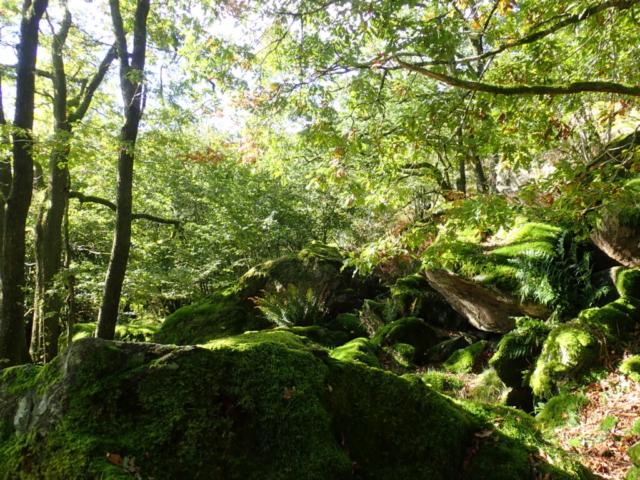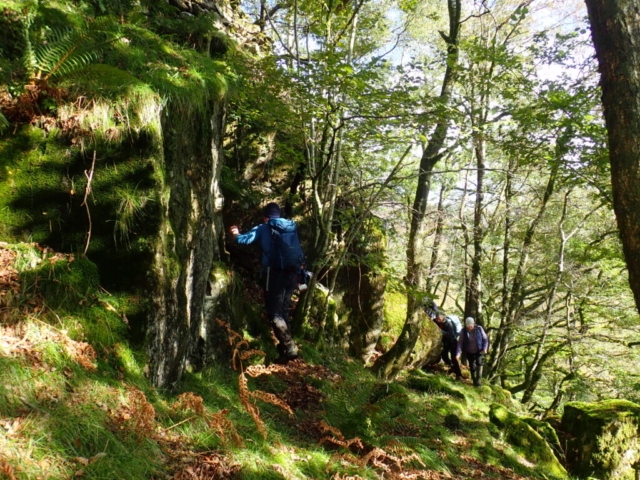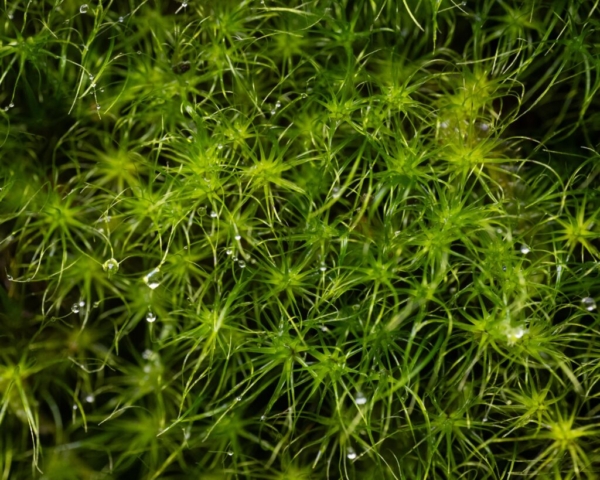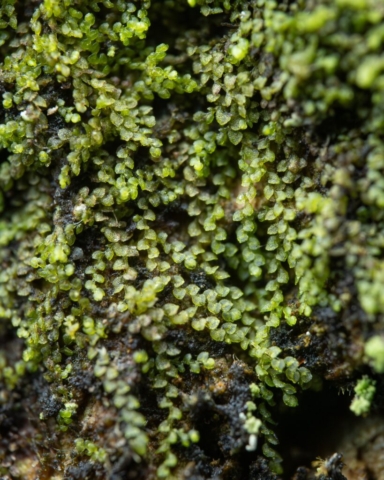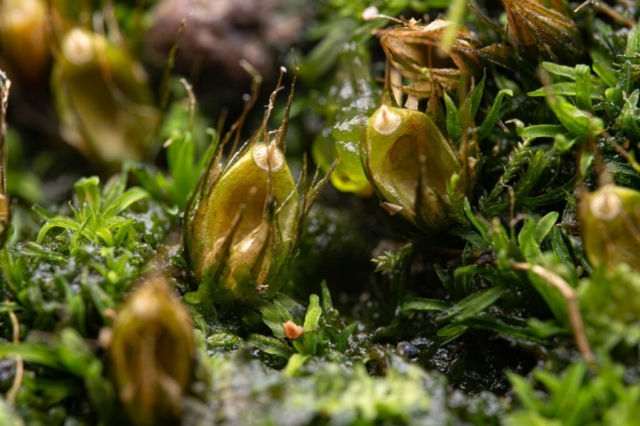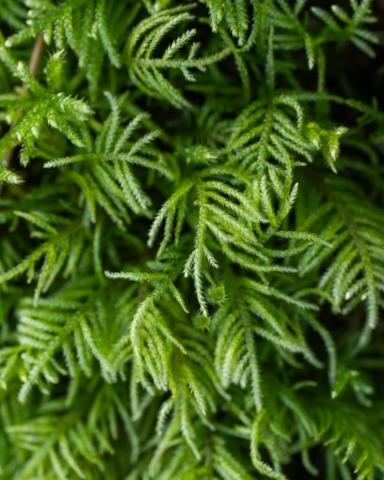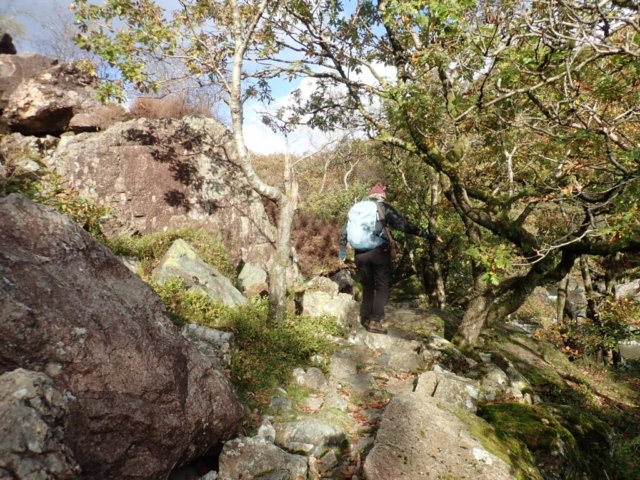For a change the sun was shining and the winds light for our October meeting at High Wallowbarrow Farm near Seathwaite in the Duddon Valley. The farm is unusual in having large areas of ancient semi-natural woodland, most of which lies within the Duddon Valley Woodlands Site of Special Scientific Interest. Whilst bryophytes have been quite well recorded in parts of the SSSI, other areas appear to have been little visited; monad SD2196 immediately west of the farmhouse has records for only three species, whilst the adjacent monad (SD2296) has a list of 189 species. We decided to focus the morning’s efforts in SD2196 and visit the spectacular Wallowbarrow Gorge in SD2296 in the afternoon.
After a brief introduction, we made our way to Wallowbarrow Coppice, an area of upland oakwood on a steep west facing slope with frequent birch and hazel. An abundance of common mosses such as Thuidium tamariscinum, Isothecium myosuroides, Rhytidiadelphus loreus and Polytrichum formosum covered the woodland floor, rocks and tree bases, with the liverworts Scapania nemorea, Scapania gracilis, Diplophyllum albicans also abundant. More unusual species included Rhabdoweisia crenulata, Orthocaulis (Barbilophozia) atlantica, Tritomaria exsectiformis, and Scapania umbrosa. A quick foray into a small mire above the wood added several Sphagna including Sphagnum papillosum and S rubellum, together with Polytricum strictum and Aulocomium palustre. An unusual Racomitrium on rocks nearby was later confirmed as R obtusum. This was formerly considered a variety or subspecies of R. heterostichum and there are as yet very few records of it in Cumbria, although it is likely to be quite widespread. Whilst we did not re-find Syzigiella (Jamesoniella) autumnalis, Grimmia ramondii or Ptychomitrium polyphyllum which had previously been found in SD2196, 62 new species were recorded. We could probably have spent the whole day in this monad and identified a lot more, but after lunch we headed into SD2296 to visit Crag End Wood and Wallowbarrow Gorge. Quickly ticking off many of the common bryophytes already encountered in the morning, we soon found some new species including Diphyscum foliosum and Hyocomium armoricum on the river banks, Sciuro-hypnum plumosum and Marsupella aquatica on rocks in the river, Amphidium mougeotii and Saccogyna viticulosa on crags, and Dicranodontium denudatum on dead wood. Towards the end of the day, the rain came in and we retreated. In total 83 bryophytes were recorded across the two monads. Thanks to Chris at High Wallowbarrow Farm for access and to everyone who participated in what was a very enjoyable day.
Text: Kerry Milligan. Photos: Kerry Milligan, Clare Shaw, Paul Ross.

